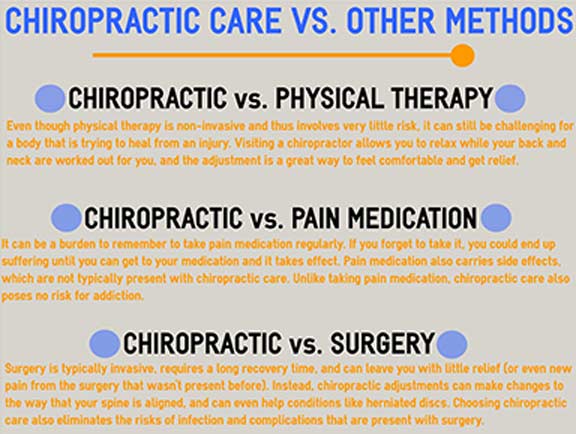Prepare Yourself To Uncover The Appealing Mobile Interactions Of Cold Laser Therapy And How It Takes Advantage Of Light For Recovery-- Dive Much Deeper Into The Science!
Prepare Yourself To Uncover The Appealing Mobile Interactions Of Cold Laser Therapy And How It Takes Advantage Of Light For Recovery-- Dive Much Deeper Into The Science!
Blog Article
Developed By-Walls Peters
You may have heard of cold laser therapy as a promising therapy option for different conditions, but have you ever before wondered exactly how it in fact services a cellular level? Understanding the mechanisms behind this therapy can clarify its performance in advertising healing and lowering inflammation. By checking out the science behind cold laser therapy, you'll gain insights into the remarkable methods which light can influence mobile processes and facilitate tissue repair work.
Exactly How Cold Laser Treatment Functions
To recognize exactly how cold laser therapy works, you need to realize the basic concepts of how light energy interacts with biological cells. Cold laser treatment, also known as low-level laser therapy (LLLT), makes use of particular wavelengths of light to permeate the skin and target underlying tissues. Unlike the intense lasers used in operations, cold lasers discharge reduced levels of light that don't create warmth or trigger damage to the tissues.
When these mild light waves reach the cells, they're soaked up by elements called chromophores, such as cytochrome c oxidase in mitochondria. This absorption sets off a series of organic feedbacks, consisting of increased mobile energy manufacturing and the release of nitric oxide, which boosts blood circulation and decreases inflammation.
In addition, the light energy can also promote the manufacturing of adenosine triphosphate (ATP), the energy currency of cells, assisting in mobile repair work and regeneration processes.
Essentially, cold laser treatment takes advantage of the power of light energy to promote healing and minimize pain in a non-invasive and gentle way.
Systems of Action
How does cold laser treatment really work to generate its healing impacts on biological cells?
Cold laser therapy, likewise called low-level laser therapy (LLLT), runs with a process called photobiomodulation. When the cold laser is put on the skin, the light energy passes through the tissues and is absorbed by chromophores within the cells.
hair restoration treatment bedford hills ny , such as cytochrome c oxidase in the mitochondria, are then promoted by the light power, bring about a waterfall of organic reactions. website link of activity is the improvement of mobile metabolic rate.
The absorbed light power enhances ATP manufacturing in the mitochondria, which is critical for cellular function and fixing. Additionally, cold laser treatment assists to lower inflammation by inhibiting inflammatory moderators and promoting the launch of anti-inflammatory cytokines.
This anti-inflammatory effect adds to pain relief and cells healing.
Healing Results
Comprehending the restorative effects of cold laser therapy entails identifying how the enhanced mobile metabolic process and anti-inflammatory homes add to its positive end results on organic tissues.
When the cold laser is related to the damaged area, it stimulates the mitochondria within the cells, bring about boosted production of adenosine triphosphate (ATP), which is critical for mobile function and repair service. This boost in cellular energy accelerates the recovery process by advertising cells regrowth and lowering inflammation.
Additionally, the anti-inflammatory homes of cold laser therapy assistance to lower pain and swelling in the targeted area. By inhibiting inflammatory arbitrators and advertising the release of anti-inflammatory cytokines, cold laser treatment help in minimizing pain and enhancing the total healing response.
This decrease in swelling not just provides immediate relief yet also sustains long-term tissue repair.
Final thought
To conclude, cold laser treatment works by stimulating cellular repair service and cells regeneration via photobiomodulation. Its anti-inflammatory properties give pain alleviation and reduce swelling by preventing inflammatory arbitrators.
This therapy supplies a comprehensive approach to recovery, providing both prompt alleviation and lasting tissue repair advantages.
Through its mechanisms of action, cold laser treatment verifies to be a reliable and appealing treatment option for a variety of problems.
